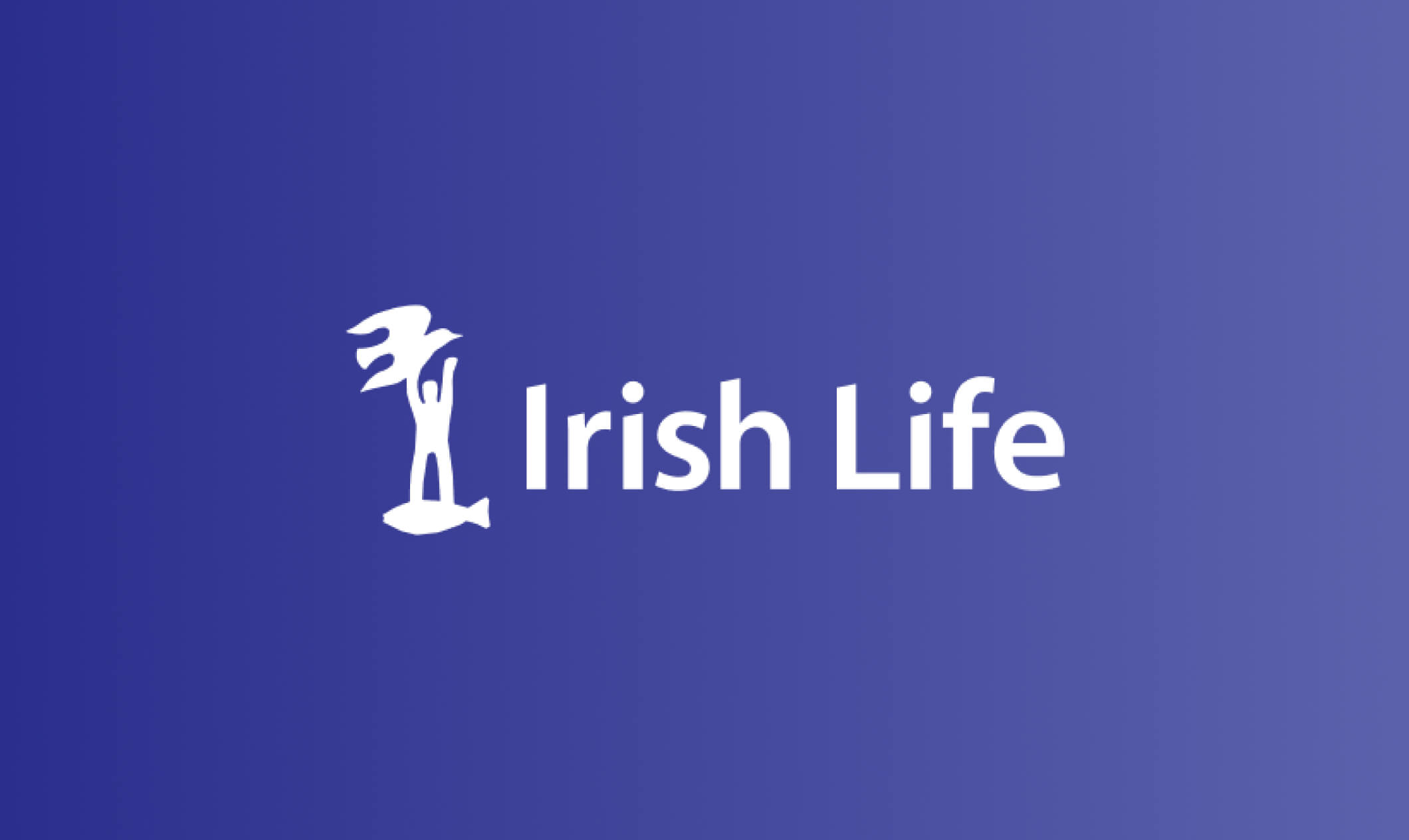You've read the lowdown on investing, but it's always a good idea to speak to the experts - and our advisors are on hand to help.
Book an appointment virtually or in-person at a time to suit you.

by Irish Life Financial Services
Written by Irish Life staff
Guides • 26 March 2025 • 7 min read

The ins and outs of investing in Ireland.
What investing is and why people might invest.
Basic investment strategies to reduce risk.
The low-down on investment jargon.
In a sentence, investing means buying something in the hope that its value will increase over time, at which point you can sell it for a profit. This might not even have anything to do with the stock market – art, jewellery, and pretty much anything else can be an investment.
At Irish Life, investment means putting regular amounts of money or a lump sum (sometimes both!) into a unit-linked investment fund, available across our pension, investment and savings plans.
Hopefully, the investment grows in value.
If your investment does grow over a long period of time, it’s a little like magic. The investment growth is added to the fund, and then any future growth applies to the increased fund value. That’s what we call [[compound growth]].

Investing is for everyone
You might see the word “investing” and think that it’s something for rich people in pinstriped suits, but it’s very accessible to everyone.
In fact, plenty of people in Ireland are already investing. Property is one of the main investments in Ireland – if you own a home, that’s very much an investment even if you never plan to rent it out or sell.
Ireland is a nation of savers, with over €205 billion on deposit in savings accounts as of Q3 2024[1].
There’s nothing wrong with keeping money aside, but it’s an opportunity cost. Over time, inflation will erode the value of a savings account – as a nation, we’re saving ourselves poorer.
One of the best benefits of investment is being able to make your money work for you and potentially outpace inflation, ensuring that your cash goes further for longer.
To protect money from inflation so that your savings don’t erode over time.
To save for a long-term goal like a house deposit or another large purchase.
To put money aside for the much longer term, such as retiring earlier or a child’s college fund.

Irish Life customers are investing for a range of different goals.
Of course, the elephant in the room with investing is the risk.
When you invest in something, you’re hoping the value will increase over time. But of course, there is a chance that it might not – it may even lose value, and you could lose money.
On the other hand, if you keep your money in a bank with little to no return then it is almost guaranteed to lose value. At 2% inflation a year, €10,000 today will have the purchasing power of less than €8,200 in a decade.
That same €10,000 invested and seeing a modest 3.25% growth over the same decade? It’s worth €11,250 by the end, even after inflation – that’s a €3,000 swing!
Warning: These figures are estimates only. They are not a reliable guide to the future performance of your investment.
Before you consider investing, it’s a good idea to take a look at your current financial situation to make sure that you’re ready to get started.
Alright, so you have the lingo down, and you’re well on your way to becoming a savvy investor. Here’s how to get started.

It's key to know your risk tolerance.
Before you choose where to invest money, you’ll need to consider what level of risk you want to take. This will help you find assets that have a matching volatility range suitable for your risk appetite.
Generally, higher risk means greater potential profit - but also higher potential losses. When choosing funds with lower risk, there’s less chance you’ll suffer a high loss, but lower volatility also means the highs aren’t as high.
Goal-based investing can help you pick a fund that’s right for you. Think about why you want to invest with the hopes of making a profit. Is it maybe:
Or is it something else? When considering your goals, think at least five years in the future - don’t forget that investing is a long game. Make sure that you will not need to access the money you are investing in the short term.
If you don’t have a large lump sum, that doesn’t mean you can’t invest. Investing in instalments can be a great way to get started and can be better than not investing at all.
You can invest a smaller amount and top up as often as you’d like once you have more money to invest. For example, you could siphon off a portion of your paycheque each month, or save your money from takeaways for a few months and top up your investment with that money.
However, if you have the lump sum to invest from the get-go while still maintaining rainy-day savings, it’s worthwhile to invest in one go. When investing, time really can equal money!

Your investment strategy is informed by your goals, risk tolerance, and financial situation.
Risk is probably top of mind for you right now. As a beginner, it can feel intimidating to take a leap of faith. But risk isn’t a bad thing – it’s the name of the game.

Risk mitigation is important.
So what are we to do when risk is everywhere?
Don’t worry – investing in Ireland doesn’t have to be an unknown gamble. There are plenty of ways to help reduce your risk when investing.
Nothing is guaranteed to eliminate risk, but you can take steps to reduce it.
Investing in diverse assets is key, because both elements spread your risk. Combining diversification with a managed fund? Now that’s the secret sauce.
Focusing on assets like stocks in a single company, which can be very unpredictable, is the opposite of spreading risk – it’s effectively putting all of your eggs in just one basket. It can not only be daunting and time-consuming – but also a bad idea for beginners.
Do you have the time to go through a company’s books and make a call on its future potential? Doubtful.
An investment that is well-diversified and also well-managed can help decrease your risk. Plus, with a managed fund you won’t have to try to research and pick the “perfect” combination of assets to diversify your investment – the expert will do the heavy lifting for you.
No one knows for sure when the stock market will peak – or bottom out. But experienced investors do understand that this is a long game. As a rule of thumb, you should invest for a minimum of five years.
All you have to do is buy wisely – and then try to forget about it for a bit. Check in roughly once a year to make sure everything is on track. It’s like that feeling of finding money in the pocket of an old jacket you haven’t worn in years (if all goes well!).
Emotion is one of the biggest risks to investors. Jittery investors make bad decisions. Buying or selling in response to media hype or sudden market rises - or falls – can lead to bad decisions. Drown out the noise and stick to your plan.
“Nothing is guaranteed to eliminate risk, but you can take steps to reduce it.”
There’s no denying it: when you're a beginner, investing has its fair share of technical lingo to get the hang of. So let’s start by covering the basics.
Volatility is the change in the price or value of an asset, especially in the short term. This is completely normal. It can be caused by changes in the asset itself or changes in the market.
Diversification is one strategy to manage risk. It’s the investment form of not putting all of your eggs in one basket. If the value of one asset falls, simultaneously another might increase, lowering the risk of overall loss.
Diversification also allows for investors to capture different growth opportunities, as well as minimising the damage down by dips in the market. In short, an investor buys different types of assets in the hopes that it will smooth the journey, giving peace of mind in the long run.
An asset is what you invest in. Assets can be all kinds of things from art or antiques to more traditional things like shares, property, and bonds. They can be tangible (physical items) or intangible (things that don’t physically exist but still have monetary value).
A company’s ownership is divided into shares – think of a share as one slice of a pie. The value of shares can rise and fall in line with the company’s performance. The terms share, stock, and equity are often used interchangeably.
A bond is a loan of money from an investor to a company or government.
A fund is typically combined money coming from multiple investors, which is designated to a specific purpose.
A managed fund is overseen by an expert. They’re knowledgeable about the assets and market, so can help manage risk and reduce costs.
MAPs are a range of unit-linked funds that are invested across multiple types of assets and are available across Irish Life Assurance plans. The funds range from lower to higher risk depending on the combination of assets and their volatility.
Warning: If you invest in this product you may lose some or all of the money you invest.
Warning: The value of your investment may go down as well as up.
Warning: These funds may be affected by changes in currency exchange rates.
[1] Central Bank Quarterly Financial Accounts | January 23, 2025
Free consultation
You've read the lowdown on investing, but it's always a good idea to speak to the experts - and our advisors are on hand to help.
Book an appointment virtually or in-person at a time to suit you.

Get an evaluation of your finances

Get answers to your questions

Get a free personalised plan

Get the right recommendations
“Use 60 mins to invest in your life, it’s time well spent on your future.”

- Linda Moran
Financial Advisor Irish Life
Irish Life Financial Services Limited, trading as Irish Life, is regulated by the Central Bank of Ireland. Irish Life Financial Services is an insurance intermediary tied to Irish Life Assurance for life and pensions.